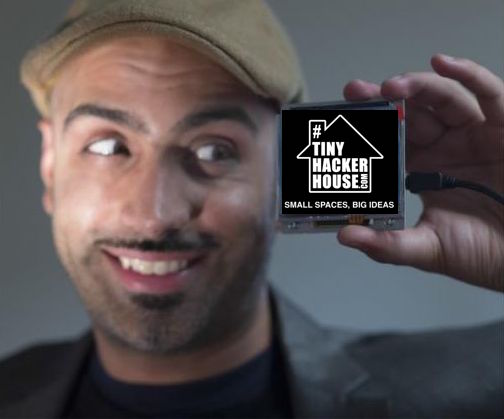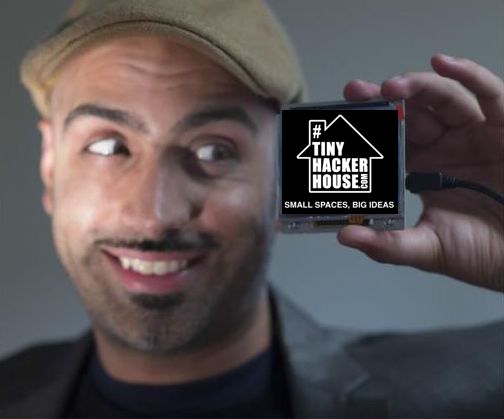Another year partnering with AIA to host 2022 Force-Majeure Call for Entries now open..
FORCE-MAJEURE
A Design Idea Competition for Modern Crisis 2022
“The architect’s call to protect the health, safety, and welfare of the public has a new and broader meaning amid challenges such as increasing climate extremes and social inequity. ... Every line drawn should be a source of good in the world.”
AIA Framework for Design Excellence
Whether act of God or a superior force, our society responds to and prepares for Force-Majeure scenarios on many different scales. It has become increasingly obvious in the past year that disasters, both natural and human-made, exacerbate inequities in our society by unequally limiting access to healthcare, green spaces, fresh food, transportation, and education for our most vulnerable populations. Strengthening our communities allows us to be more resilient in the face of future Force Majeure scenarios. How can we as design professionals help support and provide care for the most vulnerable groups of people in our society?
AIA Austin in partnership with Design Voice and COTE propose Force-Majeure, a design competition that addresses contemporary issues that are impacting our lives
This competition is meant to serve as a tool that prompts intense thinking and tough discussion on how design can help mitigate crises.
A new tool in this effort is the AIA’s Framework for Design Excellence. This document names the “defining principles of good design in the 21st century” and promises a more holistic assessment of creative problem solving. These principles expand previous efforts for sustainable and resilient design to encompass deeper social issues of equity and justice.
This year’s ideas competition is a multi-brief format that will challenge teams to identify a local issue that one of three principles of the Framework for Design Excellence—Design for Equitable Communities, Design for Water, or Design for Well-being—might ameliorate and propose a solution that embodies the chosen principle. The designs submitted will not only propose solutions to concrete issues but also explore the relationship between global crises and smaller, actionable local design interventions.
ELIGIBILTY
All are welcome
This call for design ideas is open to anyone who wants to create and put forth innovative ideas to solve current challenges. Teams may be formed by a maximum of (4) members and a minimum of (2). Team members can be from any discipline. Students are welcome to participate. Participants will only be allowed to submit one proposal and be allowed on only one team.
Diverse and interdisciplinary teams that include or consult with social workers, homeless service providers, community planners, and people who are formerly or currently homeless are strongly encouraged.
No registration fee is required.
Under no circumstances may jurors, or persons directly related to the jury participate in this competition. To mitigate some of the current challenges our community is experiencing today, you will be able to pick between three scenarios and enter only one entry.
PROJECT BRIEF & SUBMISSION REQUIREMENTS
Each team will select ONE of the following principles on which to submit an entry:
(A) Design for Equitable Communities
(B) Design for Water
(C) Design for Well-being
Each entry should comprise two parts: the statement of the issue to be addressed and the proposed design solution to the issue. For this competition, rather than setting forth a particular issue or site, the teams will propose the problem itself as part of the submission.
Within the realm of the chosen principle, each team will identify a specific local issue that the entry will address. For each of the principle briefs below, we include a sample issue and summary statement that might be given for Austin as an example. The presentation boards for each entry must clearly:
(1) State the chosen principle
(2) Name the specific issue to be addressed
(3) Summarize and document the issue, its local manifestation,
and its relation to the principle.
All submissions must include a design as a substantial component of the proposed solution; however, “design” should be construed in the broadest sense and can include all forms of built interventions, virtual spaces and constructs, writing and policy-making, mockups or prototypes, mapping and infographics, or opportunities for hacking and making. All forms of creative intervention into the built environment or social structures are welcome and encouraged. But design should be a means to an end and not an end in itself.
Submissions should consist of two portrait (vertical) 24” x 36” posters. The format and contents of the posters should reflect the nature of the proposal.
Designs that provide clear, actionable, practicable programming and design to encourage community engagement will receive special attention. All submissions must conform to the specific deliverable requirements outlined in the submission materials below.
COMPETITION TIMELINE
June 20th Competition Opens
July 15th Deadline for clarifying questions
(all answers will be posted to aiaaustin.org/force-majeure)
August 15st Competition Submissions Due (11:59 CST)
via the AIA Austin Portal
Aug 24th-26th Competition Winners Announced at Design Excellence Conference
(Final date TBD)
AWARDS
1st Place $1,000 Honorable Mention $500
*All entries that propose an interesting solution to the brief will potentially be presented in a digital exhibition, followed by a physical exhibition.
SUBMISSION PROCESS
Submit the packaged files via this link. Competition Submissions are due August 1st at 11:59 CST via the AIA Austin Portal. Any submissions entered after that time will not be considered.
Please refrain from putting any names of the team members on the presentation boards, this will cause automatic disqualification. All Team Names should be entered into the submission portal only and one member of the team should submit the team entry. Once winning entries are selected, we will place the members of the Design Team on the boards for people to view at a possible exhibition and/or publication.
If you have any questions regarding the submission process or the competition please e-mail: aiadesignvoice@gmail.com
INTELLECTUAL PROPERTY AND COPYRIGHT
All materials submitted to the competition will become property of the AIA Austin chapter, and therefore give AIA Austin all rights to that material from that moment on.
AIA Austin will publish all materials given appropriate attributes to the authors.
AIA Austin reserves the right to modify the proposals and text in order to better adapt them to any publication format, without changing the essence of the proposal itself.
The participants are responsible for using copyright-free images. AIA Austin is not responsible for the use of protected images by any of the participants.
Project Brief A
DESIGN FOR EQUITABLE COMMUNITIES
“The built environment has contributed to social inequity and has potential to have a positive impact.”
AIA Framework for Design Excellence
We cannot address the potential for design to contribute to equitable communities without first acknowledging its complicity in creating those injustices. How do we ensure that interventions into the built environment benefit all and prioritize the needs of the most vulnerable and historically excluded?
EXAMPLE ISSUE STATEMENT FOR AUSTIN:
CONSTRUCTION WORKER INJUSTICES
A recent newspaper article discussing escalating housing costs declared that Austin is a victim of its own success. But this glosses over the fact that the successes have not been proportionately shared by the most victimized. Rapidly increasing development activities and rising property values in Austin have paradoxically (though not surprisingly) failed to benefit those who do the physical work of building. Instead, workers in the construction industry are routinely exploited, denied just pay, and made to work in unsafe conditions. And these risks increase for immigrant workers who through denial of access to information and intimidation may be less equipped to demand their legal rights.
Project Brief B
DESIGN FOR WATER
“Clean water is essential to life, prosperity, and progress. The unfortunate reality is that water challenges, like so many others, disproportionately affect the most vulnerable.”
AIA Framework for Design Excellence
Designs and technologies that improve water efficiency have become more available in recent years. But just as water is more than simply a resource for human consumption, Design for Water encompasses more than efficiency. What is the interface between water in our built environment and equity? How can the design around water systems increase stability and equity in our communities?
EXAMPLE ISSUE STATEMENT FOR AUSTIN:
FLASH FLOODS
Designing for Water in Central Texas is an exercise in balancing extremes. In addition to the necessity of water conservation to protect our aquifers and watersheds, massive thunderstorms can bring a sudden excess of water leading to frequent flash flooding in our creeks and greenbelts. These disasters (which perversely seem to fall on holidays: Memorial Day 1981, Halloween 2013, Memorial Day 2015) routinely result in the loss of life and devastating damage to homes and infrastructure
Flash floods disproportionately impact poorer communities as those with means avoid the uninsurable properties, depressing land values as the frequency of major storms increases and flood zones widen from upstream development. Even well-meaning efforts to prevent future damage can lead to these communities’ displacement.
Project Brief C
DESIGN FOR WELL-BEING
“An equitable and supportive environment makes people feel that they are respected and that their thoughts and opinions matter. These environments are more likely to encourage trust and camaraderie, and will encourage people to look out for each other, while reducing mental stress and anxiety.”
AIA Framework for Design Excellence
Design for well-being is not limited to projects explicitly tied to health and wellness or to technical criteria of environmental quality. We are increasingly aware of the impact designed spaces and systems have on the constellation of mental, spiritual, and physical well-being. How can designs prioritize a holistic approach to well-being? Where are there needs to consider the effects of designs on mental health?
EXAMPLE ISSUE STATEMENT FOR AUSTIN:
TRAUMA-INFORMED DESIGN
In Austin, we have seen non-profits providing health and wellness services recognizing that “housing is healthcare” and building out their capacity to provide housing integrated into their supportive services. And for the design of both the service spaces and the residences, the concept of “trauma-informed design” is central.
Trauma-informed design prioritizes the experience of those experiencing life-changing negative experiences so that the resulting environment contributes to the emotional healing and social support of each person. It requires listening to and amplifying the voices of the end-users to make often small but highly impactful deviations from what is considered standard building practices
Learn more and Apply to Force Majeure competition







